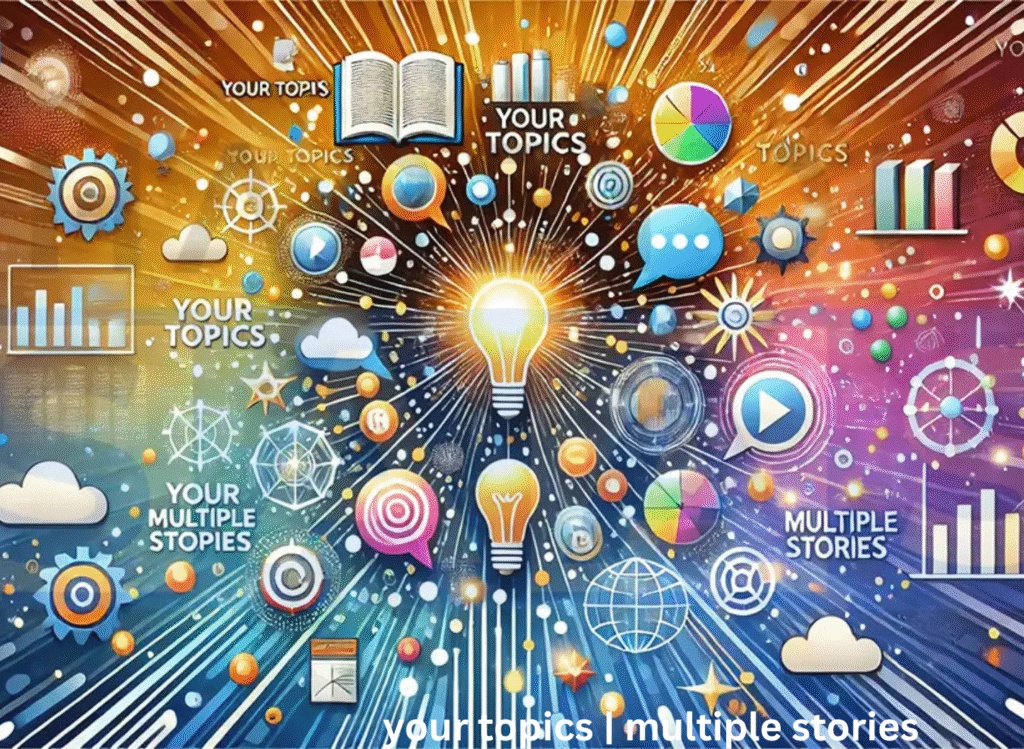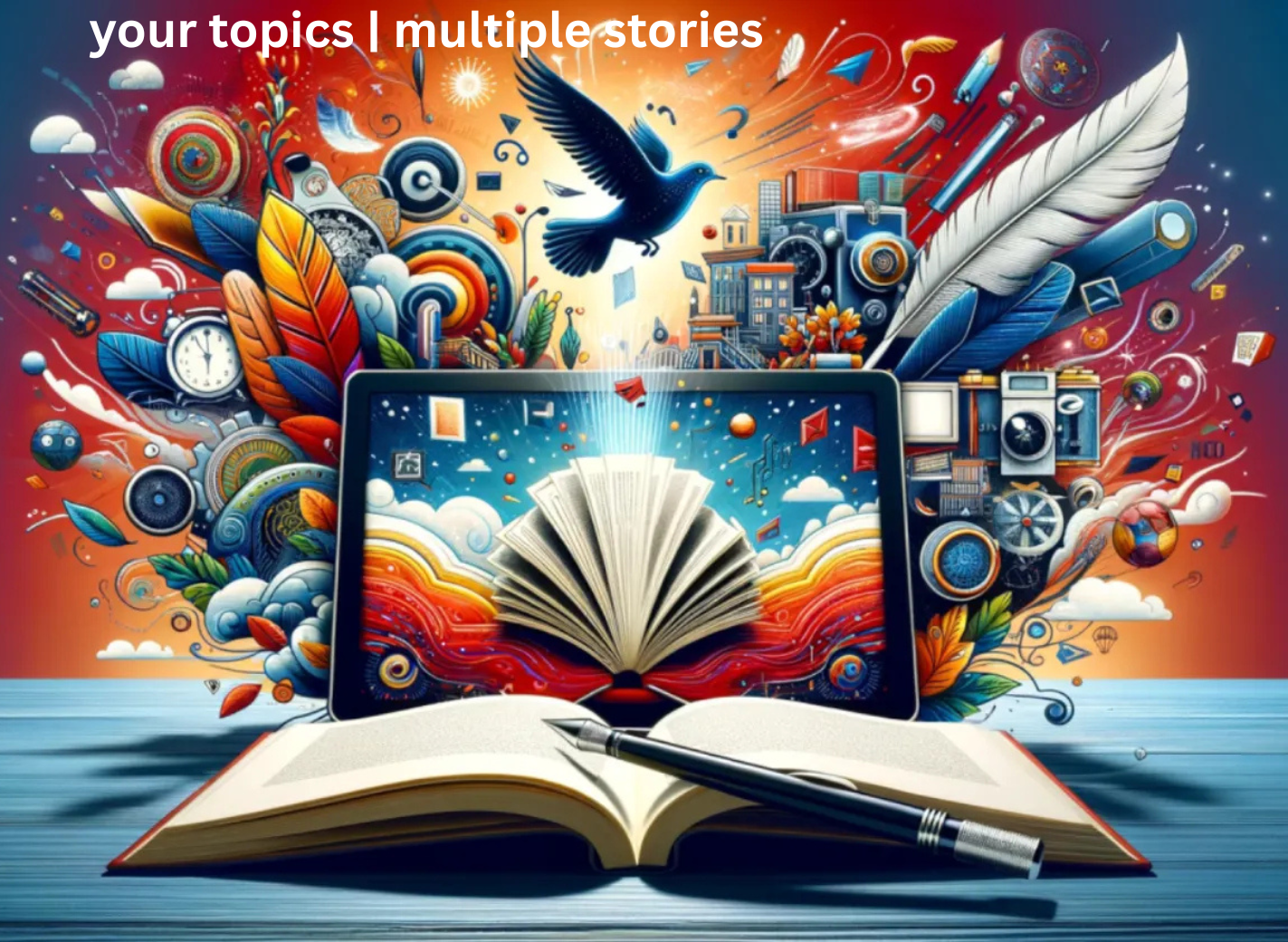Stories are the lifeblood of human experience. Whether passed down through generations or crafted in a modern blog post, storytelling is a timeless way of connecting, educating, and inspiring. But what happens when we don’t stick to a single narrative? your topics | multiple stories What if we let multiple stories coexist, each reflecting a different topic, culture, or voice? That’s where the true richness of storytelling lies—at the intersection of diversity and theme.
In this article, we embark on a journey through a tapestry of tales: from cultural heritage and innovation to personal growth and the digital age. These stories may differ in origin, tone, or context, but they are united by a common thread—authentic human experience. Each section explores a unique theme, revealing how storytelling shapes our identities, challenges our norms, and drives us forward.
By sharing multiple stories across varied topics, we invite readers to explore the broader picture of humanity. These aren’t just anecdotes—they are pieces of a larger puzzle. your topics | multiple stories Stories that transcend borders, defy expectations, and speak to the soul. Prepare to travel across different domains of life, witnessing how narratives—both simple and profound—have the power to transform.
Let’s delve into the art of storytelling, one narrative at a time, and see how a collection of voices can paint a fuller picture than a single tale ever could.
The Art of Storytelling Why Multiple Narratives Matter
Storytelling has always been central to how we interpret the world around us. From ancient cave paintings to modern-day digital platforms, humans have used stories to communicate values, emotions, and knowledge. But while a single story can inform, multiple stories can illuminate. They offer varying perspectives that allow us to see the same subject from different angles, much like shifting a kaleidoscope and watching new patterns emerge.
In a world rich with diversity, sticking to one narrative risks oversimplifying complex realities. Multiple narratives, on the other hand, embrace nuance. They tell us that no one perspective can claim absolute truth. When we listen to multiple voices—especially from your topics | multiple stories different cultures, genders, or backgrounds—we build a more inclusive and accurate understanding of our shared experiences.
Moreover, multiple stories allow readers to relate personally. Where one story might inspire a tech innovator, another might resonate with a caregiver or a refugee. This narrative multiplicity makes storytelling not only more engaging but more relevant. It ensures that a wider audience finds meaning and connection, rather than exclusion or alienation.
In business, education, and social advocacy, storytelling with multiple narratives enhances credibility and engagement. Brands that feature customer journeys from varied demographics perform better. Schools that teach history through multiple cultural lenses create your topics | multiple stories more informed students. Ultimately, honoring a mosaic of stories is a powerful act of representation and truth-telling.
your topics | multiple stories Stories That Shape Who We Are
Cultural storytelling is a bridge between generations. It’s how traditions are preserved, languages are sustained, and values are passed down. From Aboriginal dreamtime tales to African griot oral histories, each culture boasts a wealth of narratives that inform identity and worldview. These stories are not just entertainment—they’re the threads that weave the social fabric of a community.
One of the most beautiful aspects of cultural storytelling is its variety. A Japanese haiku might speak volumes in a few syllables, while a Navajo creation myth could span your topics | multiple stories hours in oral form. Despite their differences, all cultural stories serve a common purpose: to explain where we come from, why we behave the way we do, and how we relate to one another and the world around us.
These stories also play a critical role in shaping personal identity. Children who grow up hearing their family’s tales—whether about migration, resistance, or celebration—carry those memories as core parts of who they become. In a globalized world, preserving these stories becomes even more essential. They offer roots in a world that often promotes homogenization.
With initiatives like digital folklore archives and international storytelling festivals, cultures now have platforms to share their narratives globally. These stories remind us of our your topics | multiple stories differences, yes, but more importantly, they underline our shared humanity. By listening to and honoring cultural stories, we not only learn about others—we learn about ourselves.
your topics | multiple stories Stories That Disrupt and Inspire

Behind every major innovation lies a story of vision, struggle, and persistence. These stories often begin in obscurity—with a garage startup, a quiet lab experiment, or a frustrated individual seeking a better way. Yet over time, these narratives evolve into case studies of disruption that change the world. They are stories of transformation fueled by curiosity and courage.
Consider how Apple, Airbnb, or Tesla began—with unconventional ideas and founders willing to tell bold stories. The Apple “Think Different” campaign wasn’t just your topics | multiple stories about products; it was a narrative that celebrated rebels, misfits, and change-makers. Storytelling played a crucial role in branding, investor confidence, and public adoption.
Innovation stories also humanize technology. Rather than overwhelming audiences with data or specs, storytellers use narrative to show how solutions solve real-life problems. A clean energy startup might highlight a village electrified for the first time. A medical app may spotlight a patient whose life was saved. These narratives foster trust, emotion, and action.
Even in failure, innovation stories teach valuable lessons. Entrepreneurs often share their setbacks publicly—not as defeat, but as chapters in a larger success journey. These stories inspire others to take risks, adapt, and persevere. By documenting both the highs and lows your topics | multiple stories , innovation storytelling becomes a roadmap for future visionaries. And through that roadmap, change becomes not just possible, but probable.
Personal Growth and Resilience Stories That Empower
Every individual has a story worth telling. Especially when those stories involve overcoming hardship, healing from trauma, or finding purpose after loss. These personal growth narratives are among the most powerful, because they speak directly to the human spirit. They reveal vulnerability, strength, and transformation—core ingredients of resilience.
Personal storytelling is often the first step toward healing. When people share their experiences—whether in therapy, on stage, or online—they validate their journey. your topics | multiple stories That validation, in turn, resonates with others facing similar challenges. It breaks the silence around issues like mental health, addiction, or failure, creating space for community and compassion.
Platforms like TED Talks, Humans of New York, and The Moth have shown how intimate stories can inspire global audiences. These aren’t celebrities or experts—just real people with honest voices. Their courage to speak openly often empowers listeners to confront their own challenges and seek change.
Moreover, personal stories have the potential to drive societal change. When many people speak about a shared experience—racism, poverty, identity struggles—they amplify your topics | multiple stories the need for systemic solutions. These stories become tools for awareness, advocacy, and even policy reform.
Through storytelling, individuals don’t just reflect—they grow. They reclaim agency, find meaning in adversity, and encourage others to do the same. In a world often focused on polished outcomes, these raw and real stories remind us that the journey itself is the most powerful narrative of all.
The Digital Age Telling Stories in a Connected World
The internet has revolutionized how stories are shared. No longer confined to books or spoken word, narratives now travel globally in seconds—through tweets, TikToks, your topics | multiple stories podcasts, blogs, and livestreams. The digital age democratized storytelling, giving voice to the many instead of the few.
This shift has birthed new genres and storytelling styles. Instagram carousels narrate mini-essays, YouTube channels become digital memoirs, and podcasts dive deep into niche subjects with global reach. Everyone from activists to artists can now craft a brand or movement around a well-told story. As algorithms reward engagement, storytelling becomes not just expressive—but strategic.
However, this rapid connectivity comes with challenges. With virality comes distortion, and digital storytelling can be manipulated or misunderstood. Attention spans are shorter, and authenticity can be overshadowed by aesthetics or metrics. Still, the power of a good story prevails. your topics | multiple stories Movements like #MeToo or climate activism owe much of their momentum to personal stories going viral online.
Tools like Canva, Substack, and audio editing software empower everyday people to publish professional-level narratives. AI is even beginning to assist in content creation, though the human touch remains irreplaceable. Ultimately, digital storytelling isn’t just a trend—it’s a transformation in how we connect, influence, and remember.
In this era, everyone becomes both storyteller and audience your topics | multiple stories . And in that dual role lies the potential for richer, broader, and more impactful storytelling than ever before.
Conclusion
When we bring together your topics | multiple stories stories from multiple topics, we don’t just get information—we get insight. From culture to technology, from personal triumphs to digital revolutions, each narrative contributes a vital piece to the puzzle of modern life. These stories may differ in content, but they share a common essence: they reveal truth through experience.
By embracing a tapestry of narratives, we learn to listen with intention and speak with purpose. We honor differences while discovering shared your topics | multiple stories values. We find inspiration not just in success, but in struggle, change, and resilience. In short, multiple stories create a more complete, compassionate, and curious world.
FAQs
What are your topics | multiple stories in the context of this article?
A: They refer to different narratives your topics | multiple stories centered on various topics—like culture, innovation, personal development, and digital communication—woven together to provide a holistic view of human experience.
Why is it important to explore your topics | multiple stories stories from different topics?
A: It broadens our understanding, fosters your topics | multiple stories empathy, and reflects the diverse nature of human life more accurately than a single narrative can.
How can I tell my own story your topics | multiple stories effectively?
A: Focus on authenticity, emotional your topics | multiple stories connection, and clarity. Use a structure that includes context, conflict, and resolution to keep readers engaged.
What are some platforms to your topics | multiple stories share stories publicly?
A: You can use social media (Instagram, your topics | multiple stories Facebook), blogging platforms (Medium, WordPress), podcasting apps, YouTube, and community forums.
How can storytelling impact business your topics | multiple stories or personal branding?
A: It builds trust, creates emotional resonance, and your topics | multiple stories makes your brand or persona more relatable and memorable to your audience.
You May Also Read: https://techbusinessus.com/blooket-login/





